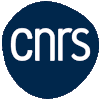On November, 22, we will have the pleasure to welcome Frédéric BONNEL from Catalan Institute of Nanoscience and Nanotechnology (ICN2) in Spintec.
At 11H, we will give a seminar on “Recent progress in experimental graphene and topological spintronics”
The recent emergence of 2-dimensional materials and topological matter has opened new prospects for spintronics technologies [1]. On the one hand, graphene has a great potential for spin transport thanks to its weak spin-orbit interaction and weak electron-phonon coupling. Room temperature spin relaxation lengths of over 30 micrometers have already been achieved, enabling the transport of spin information over long distances. On the other hand, transition metal dichalcogenides (TMDCs) and topological insulators (TIs) possess strong internal spin-orbit fields, resulting in spin-valley and spin-momentum locking, respectively. Such coupling between electronic degrees of freedom open interesting opportunities for spin-charge conversion, spin filtering and more generally, for electrical/optical manipulation of spins.
The talk will address recent experimental progress in this field of 2D-spintronics. I will start with an overview of the experimental state-of-the-art and describe our understanding of the possible spin relaxation mechanisms in graphene, which are the key to achieve full control of the spin degree of freedom. I will show how the dominant relaxation process can be identified by measuring the anisotropy of the spin relaxation with oblique Hanle experiments [2]. This technique also provides valuable information on spin-orbit proximity effects, which are particularly strong in graphene/TMDC heterostructures : the spin-valley coupling of WS2 and MoS2 can be imprinted to graphene, leading to strong spin filtering effects and enabling new strategies for spin manipulation [3].
The second part of the talk will be devoted to the charge-to-spin conversion at the surface of topological insulators (Edelstein effect). The controlled fabrication of TIs by molecular beam epitaxy will be discussed, and I will show how material and interface engineering provides control on the electronic structure of these small band gap semiconductors [4]. I will then present systematic measurements of the non-equilibrium spin-orbit torques in TI/ferromagnet bilayers by current-induced ferromagnetic resonance, and show experimental evidence for a large Edelstein effect at room temperature.
[1] D. Pesin and A. H. MacDonald, Nature Mater. 11, 409 (2012) ; X. Xu et al., Nature Phys. 10, 343 (2014) ; S. Roche et al., 2D Mater 2, 030202 (2015) ;
[2] B. Raes et al., Nature Commun. 7, 11444 (2016) ; B. Raes et al., Phys. Rev. B 95, 085403 (2017).
[3] L. A. Benítez et al., Nature Phys. (accepted).
[4] F. Bonell et al., Cryst. Growth Des. 17, 4655 (2017).




